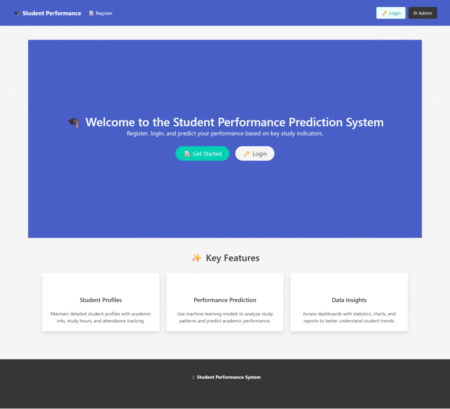
In today’s startup ecosystem, building a full-scale product before market validation is both risky and expensive. That’s where MVP (Minimum Viable Product) development comes in. According to Statista, nearly 20% of startups fail in their first year, often due to misjudging market demand. MVP development allows you to test your idea quickly and cost-effectively, with real users and real feedback, before investing in a full-fledged solution.
Whether you’re planning a mobile app, a SaaS platform, or a software product, the MVP approach offers a strategic way to validate your business concept while conserving time and resources. In this blog, we’ll explore how MVP development works, why it’s critical for startup success, and how to implement it in a way that aligns with lean methodology.
What is MVP Development?
MVP (Minimum Viable Product) is the simplest version of a product that solves a key problem for a specific audience. It includes only the essential features required to deliver core value and gather feedback from early users. MVP development is particularly popular among startups because it reduces risk, controls costs, and speeds up go-to-market time.
Instead of launching a feature-heavy product, startups focus on building the core functionality. This way, they can test user interest, gauge engagement, and iterate based on feedback. Whether it’s a basic mobile app, a web-based tool, or a prototype of a SaaS product, MVP helps founders learn fast and fail smarter.
Why Startups Should Prioritize MVP Development
For startups, every decision must be strategic. Budgets are tight, time is limited, and competition is fierce. MVP development offers a lean, pragmatic route to market entry. Here’s why it works:
Validate Market Demand: MVP allows you to test if there’s real interest in your product. Instead of guessing what users want, you get data-backed validation. Dropbox, for example, used a simple explainer video to gauge interest before building their product, which led to thousands of early sign-ups.
Save Time and Budget: MVPs are built with speed and efficiency in mind. You can avoid over-engineering features and focus only on what’s necessary. This ensures you don’t burn through resources building a product people may not want.
Faster Time to Market: With MVP development, startups can launch early and claim a presence before competitors. Twitter, for instance, began as a simple platform for short messages—and became a global force.
Encourage Iterative Development: Feedback from MVP users guides future updates, ensuring your final product is shaped by real needs, not assumptions. Instagram started as a check-in app and later pivoted to photo sharing after user input.
Attract Investors Early: A functional MVP with early traction (users, downloads, or engagement) demonstrates your product’s market potential. Airbnb secured early funding by showcasing their MVP’s success.
Minimize Risk: Instead of launching blind, you gain insights into user behavior, tech viability, and business challenges early. That leads to smarter pivots and product-market fit.
How Much Does MVP Development Cost?
MVP development costs typically range from $10,000 to $50,000, depending on the project’s complexity, tech stack, team structure, and geographic location. Factors that influence the budget include:
- Feature scope
- Development method (in-house vs. outsourced)
- Target platform (web, mobile, or both)
- Tech stack (React, Flutter, Firebase, etc.)
- Design and testing requirements
By focusing only on core features and leveraging modern frameworks, startups can drastically cut initial costs and reach users faster.
Key Stages in MVP Product Development
Developing a successful MVP isn’t just about writing code. It’s a structured, strategic process. Here’s what it involves:
1. Define the Problem Clearly
Your MVP should solve one core problem for a specific group. Get crystal clear about what issue your product addresses and why it matters.
2. Know Your Target Audience
Develop detailed user personas and understand their pain points, behavior, and needs. This ensures your MVP resonates with its intended audience.
3. Prioritize the Right Features
Keep your feature list tight. Focus only on what’s necessary to deliver core functionality and skip the bells and whistles.
4. Conduct Competitor Research
Identify what your competitors offer, then find the gaps. Your MVP should deliver value that others are missing.
5. Select the Right Technology Stack
Choose flexible and scalable tech. For web MVPs, React and Node.js are often preferred. For mobile, React Native or Flutter allows cross-platform builds.
6. Build, Test, Iterate
Adopt an agile approach. Launch a prototype quickly, test it, and improve it based on feedback. Use tools like Figma, InVision, or Bubble for quick prototyping.
7. Set KPIs and Success Metrics
Track user engagement, retention, churn rate, and conversion. This data guides future development and decisions.
Types of MVPs You Can Build
Different types of MVPs suit different needs. Some popular options include:
- Concierge MVP: You manually perform the service to test demand.
- Wizard of Oz MVP: Users think the product is fully automated, but it’s manually operated behind the scenes.
- Single-Feature MVP: Focus on one powerful function and test that.
- Piecemeal MVP: Use existing tools and APIs to stitch together a solution.
- High-Fidelity MVP: A more polished version with UI/UX close to the final product.
Each type offers a unique way to test your idea with minimal effort and cost.
Challenges Startups Face in MVP Development
While MVP development is strategic, it’s not without challenges:
- Defining the Right Scope: Too many features dilute your core value.
- Budget Constraints: Even MVPs need planning and resources.
- Speed vs. Quality: Rushing can hurt UX or introduce bugs.
- Feedback Analysis: Interpreting feedback accurately is critical.
- Tech Gaps: Startups may lack the technical know-how for rapid MVP deployment.
Partnering with an experienced MVP development company can help you overcome these hurdles efficiently.
Final Thoughts: Build Smarter, Not Harder
MVP development is the fastest, most strategic way for startups to move from idea to traction. It allows you to test your assumptions, engage real users, and create a product that solves actual problems—without wasting time or money.
By building an MVP, you’re not just launching a product. You’re building a feedback engine that helps you grow intelligently. Whether you’re a SaaS founder, a tech entrepreneur, or a startup innovator, MVP development should be your first milestone on the path to product-market fit.
Looking for a partner to help you build your MVP?
Inexture, a Best Software Development Company India, offers tailored MVP development services that turn ideas into scalable products. Let’s help you validate your concept, save time, and build with confidence.
The post MVP Development for Startups: The Lean Approach appeared first on Inexture.
Source: Read MoreÂ


